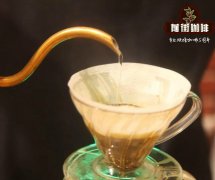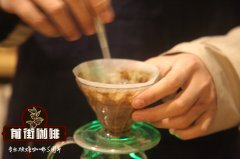Where is the authentic rosy summer coffee? How to drink coffee in Rosa Village, Ethiopia?

Professional coffee knowledge exchange more coffee bean information please follow the coffee workshop (Wechat official account cafe_style)
Is the coffee good in Guoxia Village? Is there any difference between Rose Xia Village and Rose Summer? The award-winning situation of Guoxia Village Manor
Adam Adam Overton is an American who works as a documentary filmmaker. In 2007, he was commissioned to make a special documentary on Ethiopian coffee. While filming in Ethiopia, he met an Ethiopian female assistant, Rachel Samuel. She was a professional photographer. Because of her daily work, she fell in love and got married. In the process of making coffee documentaries, she learned about coffee production in Ethiopia. I also fell in love with coffee and came up with the idea of buying a coffee garden.
Especially in the global coffee market, with the popularity of geisha varieties in Panama, there is a vague dream that they can buy a farm in Ethiopia and grow the most expensive and delicious coffee in the world-geisha / Geisha.
Adam Adam Overton had no experience of growing coffee and was determined to learn and look for resources. In 2009, the couple met American William Willem Boot and asked him for advice on how to grow geisha coffee. He bought La Mula Manor in 2006, and five years later, the small estate stood out in the "Best Panama" coffee competition. Since the emergence of geisha coffee in Panama in 2004, William has been trying to find ideal native geisha species from the vast primeval forests of Ethiopia, going deep into unexplored places, and has organized several exploration trips. collecting many varieties from various producing areas, growing many varieties in his Panamanian manor, William is a dedicated geisha coffee grower.
After learning from William Willem Boot, the Adam Overton couple made a major turning point in their dream of growing geisha coffee: to own their own geisha coffee farm. They live in downtown Addis Ababa, the capital of Ethiopia, and of course they want to find a closer place to grow, close to home and convenient transportation.
But it was not easy to find a large area of land suitable for growing geisha, altitude, microclimate, irrigation and other good conditions, and finally decided to settle in Bench Maji, the most remote southwest of Ethiopia, bordering the border with Sudan.
The production area is a two-day drive from the capital Addis Ababa, and there are several small villages called "Gesha" nearby, so the local Meanit aborigines believe that it is the origin of Gesha / Rosa. Adam O'Monton and his wife chose a piece of virgin forest land with an average elevation of 1900 to 2100 Michael, abundant rainfall and fertile undeveloped virgin forest, named Rosa Village (Geisha Village) Manor (Gesha Village Coffee Estate).
It began growing in 2011 and discussed with William Willem Boot in February 2012 to confirm the decision to grow a geisha on the estate. In the first harvest in 2015, it now covers an area of 475 hectares and 321 hectares of coffee, and now grows three varieties of geisha, Gesha 1931, Gori Gesha and Illubabor Forest. With uneasy feelings, the couple, with the first batch of geisha beans, personally met with William to do a cup test.
According to the cup test, the answer is that William tried the best cup of coffee for the whole year of 2015. The output harvested in the second year of 2017 is small, and this year (2016) follows the trend of the times by opening up international bidding, just like Panamanian geisha coffee.
In 1931, the first native geisha was taken out of Ethiopia and blossomed and became famous in a foreign country in Panama. Today, 86 years later, an American documentary filmmaker with the dream of a geisha relocates the hometown of this geisha. We have the same coffee, and we will have the opportunity to taste the native geisha species. After careful care, scientific management, strict quality control, authentic Ethiopian geisha.
In the ancient Ethiopian saying, yirga means "settle down", cheffe means "wetland", and Yirgacheffe means "let us settle down in this wetland".
Yega Xuefei is arguably one of the most famous producing areas in Ethiopia. It is located in a narrow area of Sidamo province with a height of about 2300 meters (equivalent to the height of Alishan in Taiwan). Because of its geographical environment close to mountains and lakes and coffee treatment, the coffee planted has a unique flavor, so it is independent from the Sidamo producing areas and has become one of the boutique coffee bean producing areas in Africa.
Coffee farmers harvest coffee cherries and send them to cooperative treatment stations for cleaning. The traditional Ethiopian water washing method ferments coffee beans that have been treated with skin and pulp for 72 hours, and then washes them again. The washed coffee beans are placed on a high shelf to dry, and the work will be inspected and turned constantly in the process, so as to maintain the quality.
Qianjie coffee is recommended to be brewed by siphon and hand.
Degree of grinding: 3.5 (Fuji R440, Japan)
Water temperature: 90 °C
V60 filter cup, 15g powder, water temperature 91-92 degrees, grinding 3.5.The ratio of water to powder is close to 1:15
35 grams of water is steamed for 30s
Segment: water injection to 100ml cut off, slow water injection to 225ml
That is, 30-100-95
Other suggestions for trickling extraction:
Normal pressure, recommended grinding degree of 3.5-4 / water temperature 92 °C
Philharmonic pressure, recommended 2.5 grinding degree, water temperature 88 °C
Hand punch: 3.5 degree of grinding, water temperature 89 °C
Sorrel, lemon grass, honey, blueberry, grapefruit, jasmine, lime, plum, strong rose, peach mixed with bergamot (known as Geisha flavor by the mistress), toffee, vanilla, bright acidity, clean and light.
END
Important Notice :
前街咖啡 FrontStreet Coffee has moved to new addredd:
FrontStreet Coffee Address: 315,Donghua East Road,GuangZhou
Tel:020 38364473
- Prev

The touching story of Hartman Manor in Santa Clara, Panama and the birth of geisha coffee beans
Professional coffee knowledge exchange more coffee bean information please follow the coffee workshop (Wechat official account cafe_style) Panama _ Hartman manor geisha sun from the 100-year-old manor cultivation of geisha coffee! Hartmann Manor is named after its family name. Its founder, Mr.Alois St. Hartmann (Luis Hartmann), was born in Czechoslovakia in 1891.
- Next

What is the declining Yemeni mocha? How to taste Yemeni mocha coffee?
Professional coffee knowledge exchange more coffee bean information Please follow the coffee workshop (Wechat official account cafe_style) in the late 17th century to the early 18th century, the first coffee beans drunk by Europeans actually came from Yemeni mocha, so mocha became synonymous with coffee, as long as we talk about mocha, we can associate it with coffee. However, today, after the third century,
Related
- Detailed explanation of Jadeite planting Land in Panamanian Jadeite Manor introduction to the grading system of Jadeite competitive bidding, Red bid, Green bid and Rose Summer
- Story of Coffee planting in Brenka region of Costa Rica Stonehenge Manor anaerobic heavy honey treatment of flavor mouth
- What's on the barrel of Blue Mountain Coffee beans?
- Can American coffee also pull flowers? How to use hot American style to pull out a good-looking pattern?
- Can you make a cold extract with coffee beans? What is the right proportion for cold-extracted coffee formula?
- Indonesian PWN Gold Mandrine Coffee Origin Features Flavor How to Chong? Mandolin coffee is American.
- A brief introduction to the flavor characteristics of Brazilian yellow bourbon coffee beans
- What is the effect of different water quality on the flavor of cold-extracted coffee? What kind of water is best for brewing coffee?
- Why do you think of Rose Summer whenever you mention Panamanian coffee?
- Introduction to the characteristics of authentic blue mountain coffee bean producing areas? What is the CIB Coffee Authority in Jamaica?

